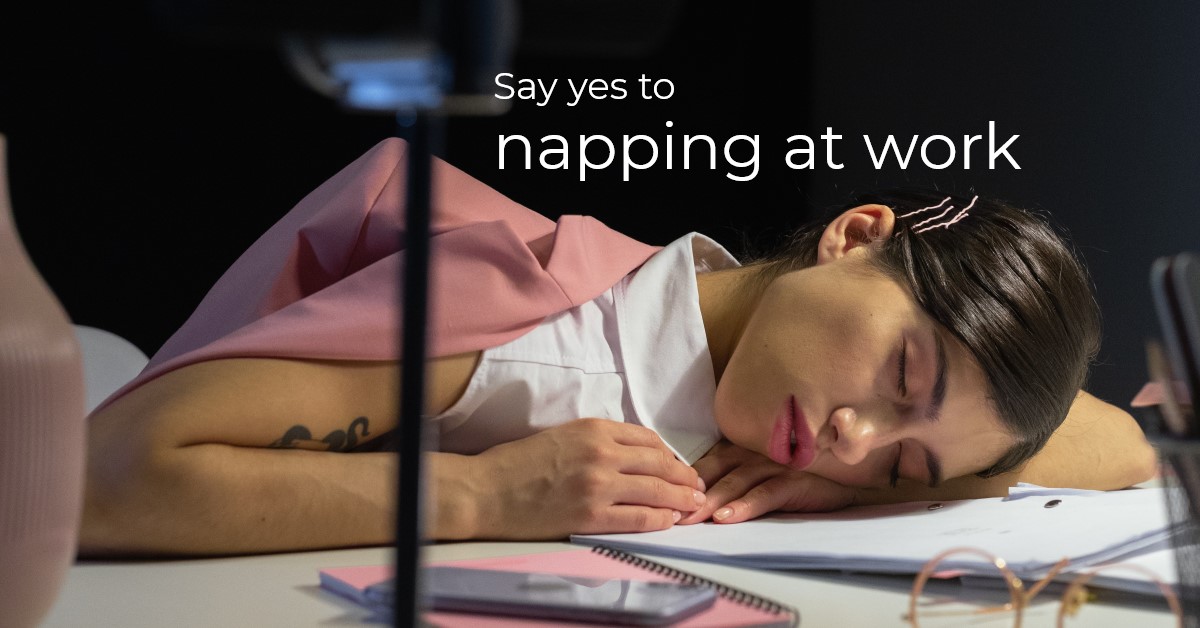Our biological wiring imposes that we can only function effectively and make good judgments with enough sleep. And yet to urban adults who lead a bustling lifestyle, an 8-hour sleep every night is probably a luxury. There are ways that we can try to meet our “sleep KPI”, but for working professionals, is a nap during work hours an option?
Deadlines and social duties often make it impossible to sleep for 7-8 hours straight. The good news is, we can (partly) make up for a lack of sleep during the day. We still need longer deep sleep for the body to repair itself, but at least a quick shut-eye may give us the energy boost we need.
Most companies allow 1 hour in the middle of the day for their employees to have lunch and catch a break. Sadly, the 60 minutes never seems to be long enough. Many of us still feel tired in the afternoon, especially when we are having a busier day than usual with multiple meetings or brainstorming sessions.
>> Read more: Time management: The key to happiness in the workplace
The cost of fatigue
It’s common for office workers to rely on caffeinated or sugary energy drinks to get them through the day, despite knowing that this can be a detrimental habit. According to the US National Library of Medicine, the side effects include insomnia, headaches, dehydration, and potential heart problems – just to name a few. Even when we don’t feel that sleepy, there are a lot of signs that show our bodies are in desperate need of rest: feeling stuck with ideas, spacing out in conversations, clumsiness, a grumpy mood, or eye strain.

A study from the Brigham and Women’s Sleep Matters Initiative estimates that workplace fatigue is costing companies $136 billion in productivity a year. Surprisingly (or not), all of these can be alleviated with a little nap during work hours. But is it unprofessional to doze off while at work? We think employees should be able to nap during work hours, and here’s why.
As remote and flexible work become the new normal, employers are realizing that it doesn’t matter how many hours a day they can see their staff in the office. Being on-site and present is not the equivalent of being productive. Meanwhile, employees don’t have to look at the screen 8 hours a day to get their work done.
If it is okay to take a coffee break or even smoking break, managers shouldn’t frown upon a napping break. In fact, it’s even better. An article in Advances in Management stated that “Workplace napping is a natural low cost activity to increase worker productivity”.
>> Read more: “Stay distant to get close”, a small talk about personal space at work
Say yes to workplace napping
To be specific, there are different types of naps that can bring various benefits. A medically reviewed article suggests that:
- A 20-minute power nap increases your alertness and motor skills
- Napping from 30-60 minutes helps you make better decisions
- Longer naps from 60 to 90 minutes boost creativity
Of course, by any means don’t go take a nap and wake up three hours later. Napping for too long can cause drowsiness and disorientation. It can also mess up your biological clock. There are a few tips for you to have the most productive workplace napping:
- Have a regular schedule – try to form a habit and arrange your tasks around it
- Find a dark spot – it helps you fall asleep faster
- Don’t forget to set an alarm!
When it comes to self-care, we can spend big bucks on gym memberships or a personalized diet. Then we forget about the most fundamental part of it: getting enough sleep. That’s not to say working out or eating well are less important, but they definitely won’t bring the best results when you’re sleep deprived.
So, instead of fighting internal battles just to keep your eyes half-open, listen to your body and go take a nap. If you’re a manager or employer, workplace napping is an element of the company culture that you might want to consider promoting. It enhances your employees wellbeing, and improves the overall team performance.
The JobHopin team

